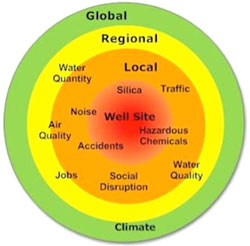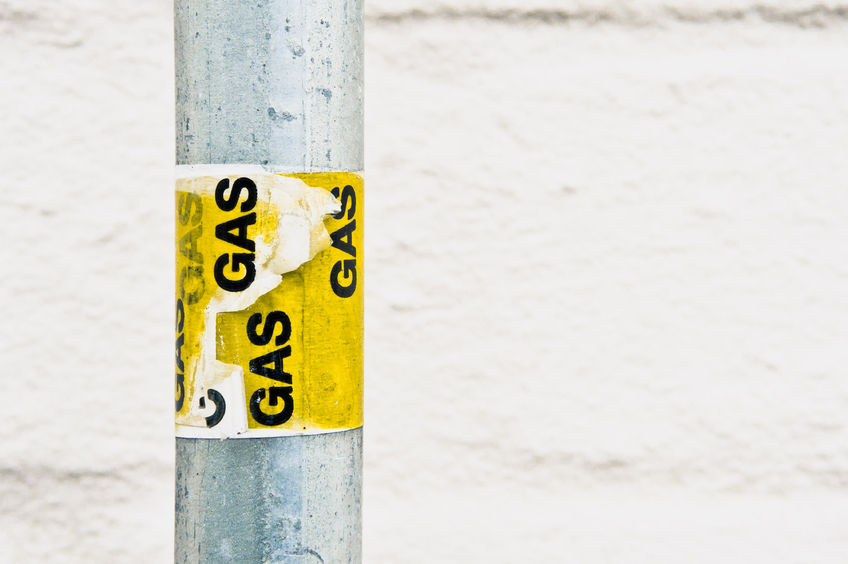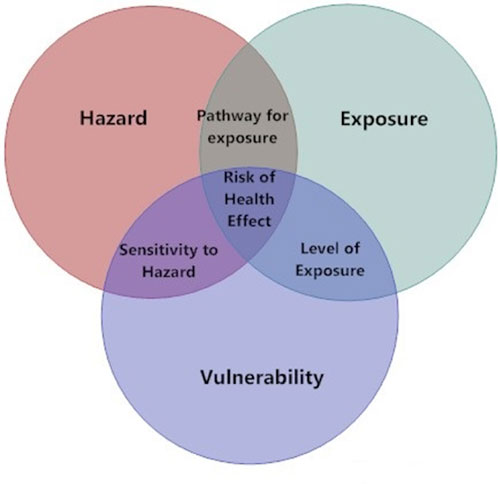| University of Colorado at Boulder | ||||||
 |
||||||
|
For an environmental hazard to pose a risk to public health a vulnerable human population must come into contact, i.e., be exposed to, the hazard. Worker populations may have direct contact with chemical, physical, and biological hazards. Chemical hazards originating from oil and gas operations can also be transported offsite to nearby communities in air and possibly water. Communities can also be exposed to physical hazards associated with oil and gas operations due to proximity (e.g., noise, light, or vibration) or through use of shared infrastructure (e.g., roads). Communities also can also be exposed to a range of psychosocial stressors that result from competition for resources (e.g., water and housing) and changes in social structure (e.g., jobs and influx of workers). As illustrated in the Scale of Exposure image above, from Adgate 2014, the health risks to a specific community or subpopulation within a community (e.g., children, the elderly) will depend on proximity to a particular oil and gas operation as well as frequency and duration of exposure. Oil and gas workers likely are at the highest risk for short-term (acute), as well as some longer term (chronic), health effects due to the numerous hazards and higher occupational exposures they experience. The use of personal protective equipment, safety training, and other procedures are designed to protect workers from hazards and exposures present on oil and gas sites. While chemical concentrations typically decline with distance from oil and gas development sites, residents living near drill sites and related infrastructure may be at increased risk in some cases because they may be exposed for a longer durations than worker populations that work onsite but reside elsewhere. Communities near the oil and gas development sites may be at higher risk for accidents or malfunctions because of their proximity; however, the risk typically declines with distance from a hazard. Similarly, risks from chemical emissions, noise levels, and light pollution typically decline with increasing distance. The distance at which chemical exposures, noise, light and vibration become a concern to health varies by the hazard and are not known in all cases. While noise, light, and vibrations typically decline with distance from the source, chemical and physical concentrations vary by the rate or intensity of release into the environment. For example, chemical concentrations at worksites or in communities are affected by wind speed and direction, human activities that affect exposure, such as breathing rates and the number of hours spent at work or home. More broadly, populations living in regions with oil and natural gas development may experience degraded air (e.g., increased ozone levels) or water quality (e.g., due to spills or leaks) or quantity (e.g., due to localized use of a locally scarce resource).
|
||||||

 Public Health Basics
Public Health Basics Public Health Hazards
Public Health Hazards Public health Risks
Public health Risks Best Management Practices
Best Management Practices Resources for Communities
Resources for Communities